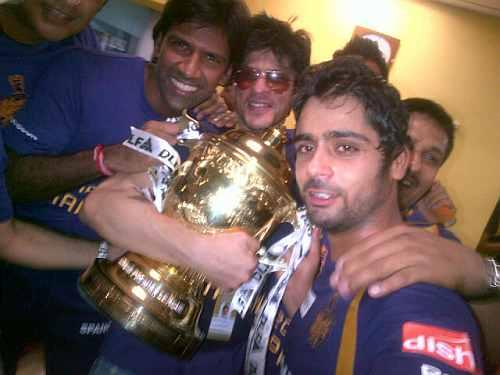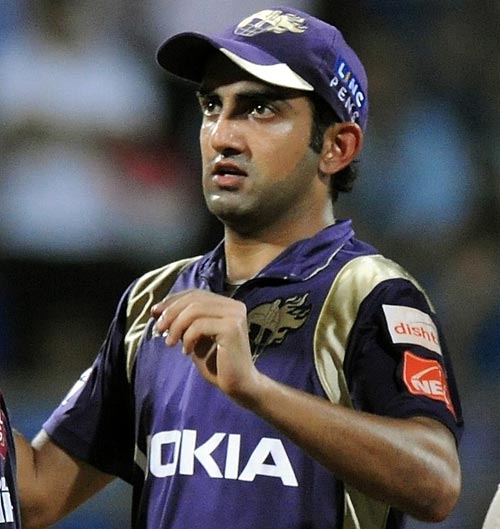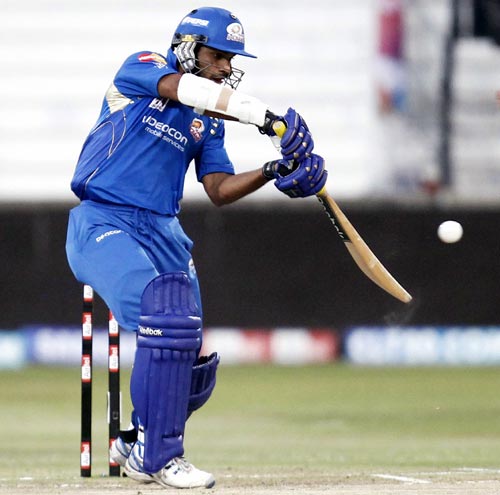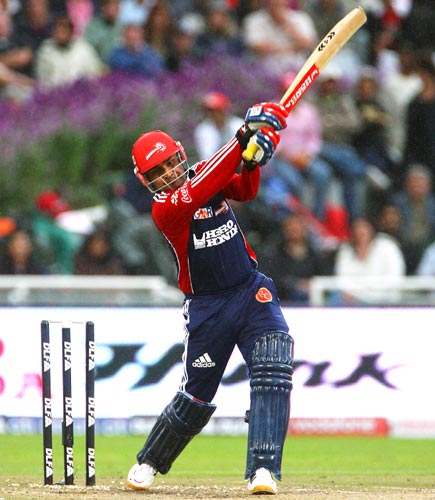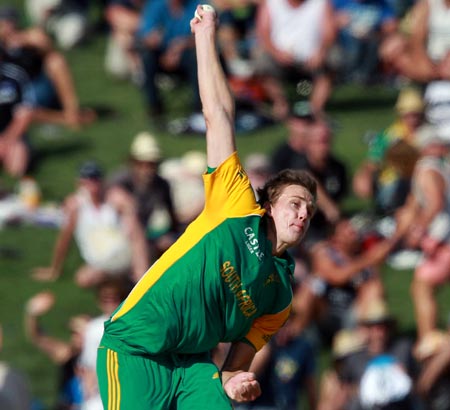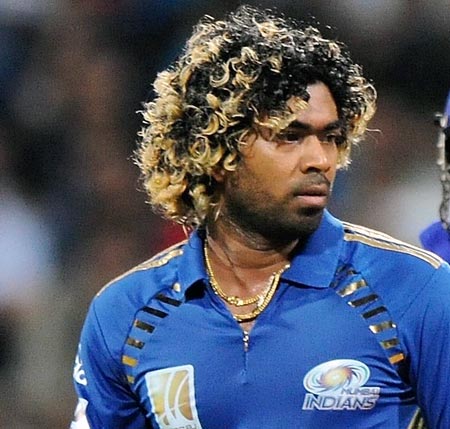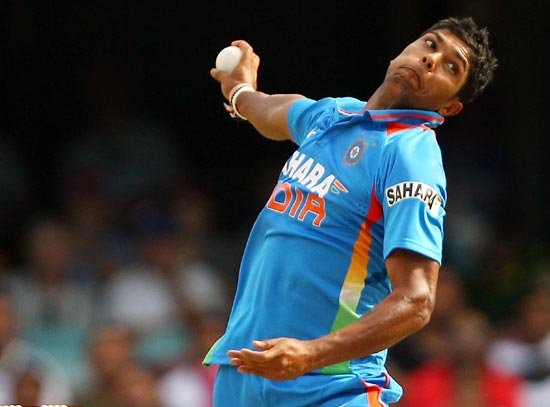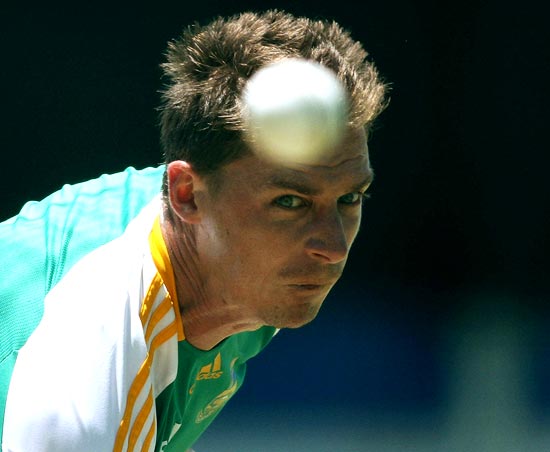 | « Back to article | Print this article |
Kolkata win maiden IPL title
Kolkata Knight Riders beat defending champions Chennai Super Kings in a closely-contested final, in Chennai on Sunday, to crown themselves IPL champions for the first time.
Quite a few players left a mark in the fifth edition of the cash-rich tournament, which saw a lot of close finishes and full houses for virtually every game.
The dangerous Chris Gayle, with his power-hitting, was the most dominating batsmen, while South African pacer Morne Morkel finished as the tournament's top wicket-taker, just ahead of impressive West Indies spinner Sunil Narine.
Here's a look at the top-five batsmen and bowlers in the just-concluded tournament.
Chris Gayle
There was no stopping Chris Gayle. The West Indian left-hander batted like a man possessed, hammering 733 runs in 15 matches, at an average of 61.08. He had an amazing strike rate of 160.74.
But Royal Challengers Bangalore were unable to capitalize on the flying starts they got from Gayle and failed to make it past the group stage.
No ground seemed big enough when Gayle got going. He hammered a phenomenal 59 sixes, while no other batsman got more than 20.
Such was Bangalore's over-dependence on Gayle that when he failed to fire, they failed to put up big totals or chase down big scores. He was out for 27 in the do-or-die match against Deccan Chargers. Bangalore lost the game by nine runs and were knocked out of the tournament.
He struck 13 sixes during his whirlwind knock of 128 from 62 balls against Delhi Daredevils and is the only batsman to score three centuries in the IPL.
Gautam Gambhir
Gautam Gambhir finally realised Shah Rukh Khan's dream, leading the Bollywood star's franchise, Kolkata Knight Riders, to their maiden IPL title.
While his captaincy stood out, the India opener also led from the front, scoring 590 runs, including six half-centuries, in 17 matches.
He backed his key players, like the out-of-form Yusuf Pathan, and got the best out of West Indian mystery spinner Sunil Narine and Bangladesh all-rounder Shakib Al Hasan, which, in the final analysis, was instrumental in the title triumph.
With the bat, Gambhir is one of the most consistent players in the IPL. He is the second highest scorer in IPL history, behind Suresh Raina, with a tally of 2065 runs in 72 matches and only one of three players to have aggregated 2000 runs or more in the T20 tournament.
He may have failed with the bat in the last few matches, including the final, but did enough in the group stages to help the team build momentum.
Shikhar Dhawan
Deccan Chargers finished second from the bottom in the standings with just four wins from 16 matches, but sure will take many positives from the tournament.
The biggest is the batting of opener Shikhar Dhawan. The left-hander hit his way to 569 runs from 15 matches, with the help of five half-centuries, and provided his team strong starts in most of the games.
The indifferent form of the middle order batsmen, however, hindered Deccan big time as they finished with below par scores on most occasions despite Dhawan's good starts.
Ajinkya Rahane
Ajinkya Rahane brought about a refreshing change to this year's IPL. He was one of the rare batsmen who succeeded despite not resorting to the ugly hoicks or the big heaves across the lines.
The youngster thrived in the company of veteran Rahul Dravid at the top of the order and smashed his way to 560 runs, including a century and three fifties, from 16 games.
He also hit his way to a record tally of 73 boundaries in the tournament by resorting to orthodox stroke-play that delighted the purists.
Rahane's success with the bat was instrumental in Rajasthan Royals challenging till the very end for a spot in the play-offs.
Indeed, it is not surprising that he is being discussed as the next big thing in Indian cricket!
Virender Sehwag
Delhi Daredevils had the best side on paper, and finished the league stage well ahead of the rest of the field. However, they choked when it mattered most and were knocked out in the second qualifier by runners-up Chennai Super Kings.
Captain Virender Sehwag was simply unstoppable in the league phase of the tournament as he smashed his way to 495 runs, including five half-centuries, in 16 matches. His strike rate, at 161.23, was even better than that of Gayle.
During the course of the tournament, he also became the first player to hit five consecutive fifties in the history of T20 cricket.
Sehwag may have come under a lot of flak for some poor selections and strategy in the play-offs, but it was because of his batting that Delhi went into the first and second qualifier as the team to beat.
Morne Morkel and Sunil Narine
If Virender Sehwag delivered for Delhi with the bat, Morne Morkel was the key bowler in the team's dominating show in the league stage. Surprisingly, he was kept out of the team when he was needed the most.
Delhi benched him for the second qualifier against Chennai Super Kings and paid a big price for the goof-up.
Without Morkel, the Delhi bowlers struggled to make an impact on the high-flying Chennai batsmen, who amassed an imposing 222 runs, before registering a convincing 86-run victory.
Morkel took home the Purple Cap for finishing as the top wicket-taker with 25 wickets from 16 games, at an average of 18.12.
He was effective with the new ball as well as at the death, using his height to good effect to generate extra bounce.
Sunil Narine:
That Sunil Narine was adjudged the player of the tournament in his first IPL says a lot about the impact he made in his debut season.
Few batsmen were able to pick which way he turned the ball, and even the best players of spin were done in by his guile.
Sachin Tendulkar too failed to unlock the spinner's mystery delivery. When the teams met at the Wankhede in Mumbai, the ace batsman, expecting the ball to leave him, shaped up to play it on the off-side only to be deceived by the sharp turn.
Also, he single-handedly destroyed Kings XI Punjab, claiming five for 19 in four overs at Kolkata, including the wickets of Adam Gilchrist and Shaun Marsh.
Narine finished a close second in the list of wicket-takers with 24 victims from 15 matches, with an amazing economy rate of 5.47 and best figures of five for 19.
Kolkata had a bunch of wily spinners in their line-up but Narine was the best of the lot. Without doubt, he played a leading hand in Kolkata's maiden IPL triumph. Now the West Indies will be hoping he makes the same impact when he plays international cricket.
Lasith Malinga
If not for Lasith Malinga, Mumbai Indians would have struggled to even make the play-offs.
He was hampered by an injury midway through the tournament, but when he turned out he was bang on target with virtually every delivery.
The Sri Lankan ace was the most difficult bowler to attack in the IPL. He dished out a variety of deliveries, including the slower ball, quick bouncers, slow bouncer and toe-crushing yorkers.
Whenever Mumbai needed a wicket, Malinga was called upon and on most occasions delivered, despite not getting enough support from the other bowlers.
He finished with 22 wickets in 14 matches, with best figures of four for 16.
Umesh Yadav
Umesh Yadav is currently one of the best fast bowlers in the country. He played in as many as 17 games for Delhi Daredevils and impressed with his extra pace and ability to move the ball.
He came into the tournament on the back of impressive performances for the Indian team and continued to deliver with the ball in the IPL.
The pacer had a busy schedule in the last few months, but still generated good pace to claim 19 wickets from 17 matches.
Dale Steyn
Though R Vinay Kumar finished with more wickets than him, there is no doubt that Dale Steyn was the better bowler.
When on fire, Steyn proved to be one of the most difficult bowlers to negotiate even on the docile Indian pitches. He saved his best for last, claiming three for eight in four overs against Royal Challengers Bangalore, including the wickets of the dangerous duo of Chris Gayle and Tillakaratne Dilshan.
The South African pacer finished with 18 wickets from 12 matches at a strike rate of 15.5 and an impressive economy rate of 6.10.
